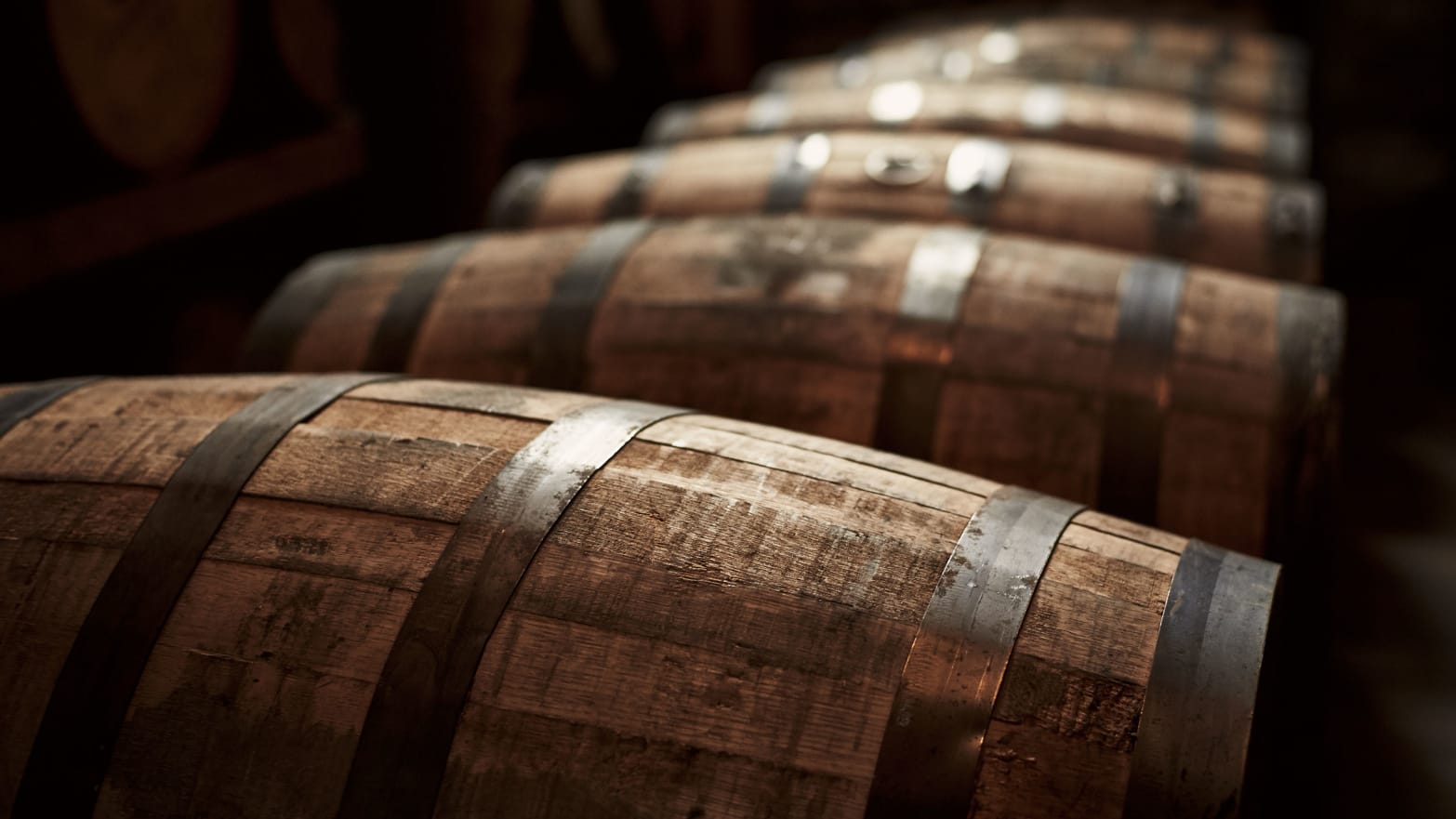A whiskey warehouse is all about the promise of the future.
Inside these giant buildings you’ll find thousands upon thousands of American oak barrels holding whiskies of various ages. (According to the Kentucky Distillers Association, there are currently 7.5 million barrels maturing in Kentucky alone.) A thick film of dust and a constellation of cobwebs cover most of these casks, but don’t be fooled—a complex set of reactions and processes are working to turn the crystal clear spirit into rich, amber-hued whiskey.
If you start taking barrel samples from a particular warehouse, you’ll usually find most of the whiskey is fairly similar—which is, of course, on purpose. Consistency is the goal of bourbon distillers. Your favorite brand of bourbon or rye should taste the same every time. If most of the barrels used are fairly similar to begin with, any small variations will disappear when barrels are mixed together before bottling.
That’s what’s supposed to happen, anyway. And it usually does. Though occasionally, something beyond explanation occurs.
I once tasted whiskey from several nearly identical barrels that had been filled with the same spirit on the same day. The barrels sat next to each other for years, exposed to the same weather and temperature fluctuations. Despite all this, they ultimately tasted completely different. If I had been given them in a blind taste test, I wouldn’t have thought they were made by the same distiller.
While that is an extreme case—like when a rare lapis lazuli colored lobster is pulled out of frigid Maine waters—occasionally a distiller will tap a barrel and taste something that is exceptionally different and unusual.
These so-called unicorn or honeyed barrels can be absolutely delicious but what causes them to develop? It’s an especially puzzling question, since the distillation process is extremely standardized and there are very few differences from spirit batch to spirit batch. Obviously, how long a cask has aged will affect how the whiskey tastes. Its location in the warehouse (on a cooler first floor or on a warmer upper floor) also factors in, too. But if the grain recipe, yeast strain and still have remained the same, there aren’t many variables left to explain the phenomenon. (Yes, some barrels differ in a bad way, but that’s usually due to something dripping on the barrel or a knot in a stave that allows in more air.)
To find a concrete answer, I called Lew Bryson, Half Full columnist and author of Tasting Whiskey: An Insider’s Guide to the Unique Pleasures of the World’s Finest Spirits and Whiskey Master Class:The Ultimate Guide to Understanding Scotch, Bourbon, Rye, and More. He immediately recalled the first time he tasted a unicorn barrel years ago. “I was just like, that’s not really happening,” he said, “but there it was.” Back then in the mid-1990s, no company wanted to talk about the phenomenon. “You want people to think that every barrel is good or the same,” Bryson contended. Traditionally, any barrel that varied in taste was blended with standard ones. “Put that barrel in with a thousand barrels of stuff that tasted normal,” he said.
Bryson believes these unicorns are caused by the wood of a barrel—perhaps a tree had unusual levels of sugar or grew on the slope of a hill without much direct sunlight. “The wood has got to be the most likely suspect,” he said.
Given that, I called Andrew Wiehebrink, director of spirit research and innovation at the Independent Stave Company (ISC) in Lebanon, Kentucky, which has been making barrels for more than a century and works with many leading whiskey brands to develop signature casks.
Wiehebrink also believes that unicorn barrels are the product of wood, since there is variation from tree to tree and barrel stave and to barrel stave. He pointed out that all 30 staves in a standard 53-gallon American oak barrel could theoretically hail from 30 different trees. A tree’s rate of growth is key and will affect how a barrel’s wood reacts when the cooperage toasts it or chars the interior barrel before it’s filled with liquor.
But that’s not all. The growth rate can also “have an effect on how the whiskey moves in and out of that barrel,” said Wiehebrink. That process is key to the aging of whiskey, since the alcohol picks up color and flavorful compounds from the wood. He points out that a lot of these unicorn barrels taste as if they are older than they actually are, which could be caused by porous wood that lets in more air resulting in increased levels of oxidation.
He estimates that 15 to 20 percent of the whiskey samples ISC evaluates deviate from the norm. What’s even more intriguing is sometimes it’s hard to figure out where a particular flavor comes from. You might detect a hefty note of vanilla, but a chemical analysis of the whiskey could show regular levels of vanillin, the compound that produces the flavor profile in a whiskey.
Whiskey companies use gas chromatographs to chart the top 45 or 50 flavor compounds in samples, but there are actually 400 to 500 compounds that contribute to the flavor of barrel-aged whiskey. “Key compounds are a good start but not necessarily the whole picture,” said Wiehebrink. “Obviously, either our minds are playing tricks on us, or there is something in there that’s providing this note, whether through the compound itself or through a combination of stuff that we’re not measuring.”
Trey Zoeller, founder of Jefferson’s Bourbon, has been hunting for unicorn barrels since he started his company in 1997. “Finding them is pretty damn easy,” he said with a laugh. “Just taste them. There is no other way to do it.”
Back in the late ’90s it wasn’t hard for him to buy these special barrels. The bourbon boom was in its infancy and brands weren’t interested in limited-edition runs of just a few hundred bottles. No market existed for them. “There were only eight distilleries in Kentucky when I started. Most of them had a huge supply that they couldn’t get rid of,” remembers Zoeller. “It was all about consistency. If there was something they deemed outside of their control, they didn’t want it.” Now, these special whiskies are often prized and are sold as high-priced small batch releases.
Jefferson’s has its own distillery today and still distills on contract as well as buys barrels from other producers. Considering Zoeller can now control every part of his whiskey making process, are deliberately created unicorn barrels far behind? “Nope,” he said. “They’re unicorns for a reason.”

